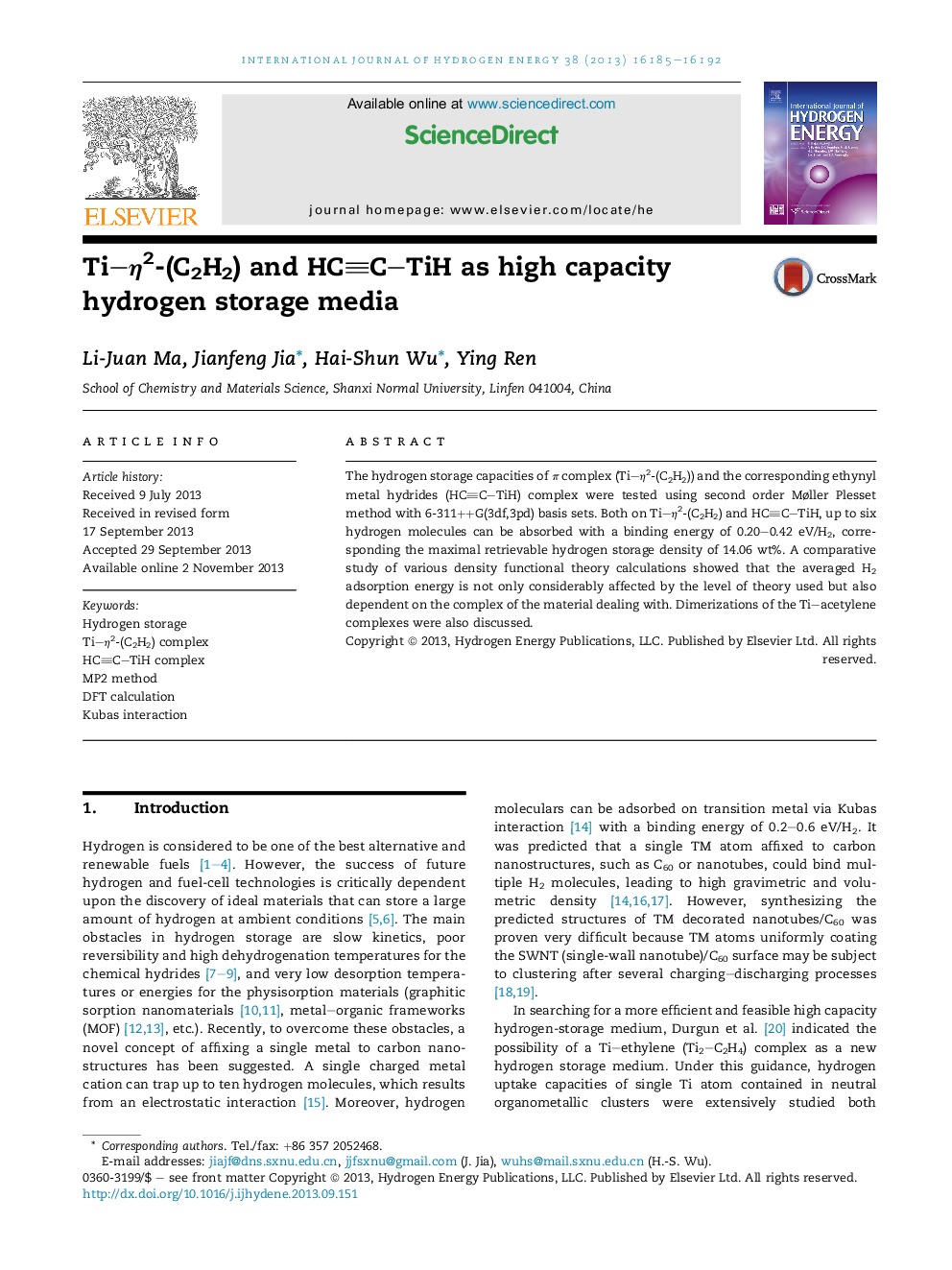| Article ID | Journal | Published Year | Pages | File Type |
|---|---|---|---|---|
| 1274180 | International Journal of Hydrogen Energy | 2013 | 8 Pages |
•Ti–η2-(C2H2) and HCC–TiH complexes show an uptake capacity of 14.06 wt%.•Ti–η2-(C2H2)(6H2) and HCC–TiH(6H2) are energetically favorable below 315 K, 275 K.•The importance of Gibbs free energy correction on the adsorption energy was shown.•The adsorption energy is affected by the theory used and dependent on the complex.
The hydrogen storage capacities of π complex (Ti–η2-(C2H2)) and the corresponding ethynyl metal hydrides (HCC–TiH) complex were tested using second order Møller Plesset method with 6-311++G(3df,3pd) basis sets. Both on Ti–η2-(C2H2) and HCC–TiH, up to six hydrogen molecules can be absorbed with a binding energy of 0.20–0.42 eV/H2, corresponding the maximal retrievable hydrogen storage density of 14.06 wt%. A comparative study of various density functional theory calculations showed that the averaged H2 adsorption energy is not only considerably affected by the level of theory used but also dependent on the complex of the material dealing with. Dimerizations of the Ti–acetylene complexes were also discussed.
